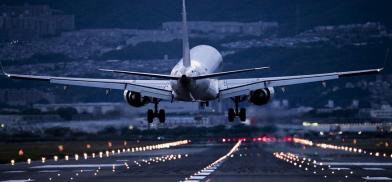Time to boost connectivity in South Asia: India-Sri Lanka model can be replicated
The progress of India’s air bubble agreements with neighbouring South Asian countries bears watching in the period ahead, writes N Chandra Mohan for South Asia Monitor

Trade within South Asia is abysmally low in large part due to poor connectivity. Air travel services are a case in point. Trading costs remain high as regional connectivity, even for capital cities, is limited. Bilateral air connectivity has in fact been the best only between India and Sri Lanka, followed by India and Nepal and India and Bangladesh.
To boost intra-regional trade, improving air connectivity is therefore imperative. It facilitates more tourism and provision of healthcare and education services. Above all, it encourages more people-to-people contact and forges closer cultural and religious linkages in the neighbourhood.
COVID-19 and air bubble flight
The exigencies of battling COVID-19 have naturally shut down air travel services not just in South Asia but also in the rest of the world. But it is gradually resuming with so-called air bubble travel arrangements. These are reciprocal arrangements between two nations that allow freer movement of travellers and dispense with the mandatory requirement of quarantine.
The first air bubble arrangement in South Asia was created by India with the Maldives on August 13. Less than two weeks later, single weekly direct flights of India’s national flagship carrier Air India to the Maldives have already begun from Thiruvananthapuram, the capital of Kerala.
The air bubble arrangement between India and Maldives works in the following manner. The Maldives has re-opened its borders since July 15 as it is keen to revive tourist inflows into the island nation. India happens to be its second fastest-growing tourist market. As an overwhelming majority of those infected by COVID-19 are in the capital city of Male, visitors from India will be taken straight to the resort islands that are unaffected.
Maldivians, for their part, come to India for medical treatment, especially to hospitals in Kerala where the quality of healthcare is good. The healthcare links of Maldives with Kerala extend for almost a century.
Air bubble flights to other South Asian nations
India is seeking similar arrangements with other countries in the region. “We are already looking at air bubbles with Sri Lanka, Bangladesh, Afghanistan, Nepal, and Bhutan. And we are in a very advanced stage with many of them. (Air bubble with) the Maldives has been established. Kushinagar has been declared as an international airport…,” Hardeep Puri, India's Minister for Civil Aviation, Housing, and Urban Affairs and junior Minister for Commerce and Industry, stated as quoted by Indian Express.
The arrangement with Bangladesh, for the instance, is expected to be announced at the virtual meeting of the Joint Consultative Committee towards the end of September.
Connecting Buddhist circuit
The Kushinagar airport in Uttar Pradesh is expected to be operational in two months. This is a major initiative of the National Democratic Alliance (NDA) government to improve regional connectivity to the Buddhist tourism circuit as it is proximate to Lumbini, Shravasti, Kapilvastu, Sarnath, and Gaya. There might also be an airport at Shravasti in the near future. This meets a long-standing demand of pilgrims and tourists from South and South-East Asian countries like Sri Lanka, Nepal, Myanmar, and Thailand who are now expected to visit in larger numbers to offer prayers at Kushinagar where Buddha attained Mahaparinirvana after his death.
India has conveyed to the newly elected Prime Minister Mahinda Rajapaksa that it expects the inaugural flight to Kushinagar to take off from Sri Lanka. Bilateral air connectivity is the most advanced between India and Sri Lanka which in pre-COVID-19 times reached up to 147 flights a week between the two countries, covering a total of 11 bilateral routes like Bengaluru, Chennai, Delhi, Gaya, Kochi, Kolkata, Mumbai, Mathurai, Thiruchirappalli, Thiruvananthapuram and Varanasi. All of this is largely due to progressive liberalisation of air services according to the World Bank’s report, "A Glass Half Full: The Promise of Regional Trade in South Asia.
The big question is how soon will the rest of the neighbourhood be well-connected? The policy challenge is to ensure that this business remains viable for private and state- owned airlines to operate throughout the region. For instance, a private Indian airline suspended its flights from Guwahati to Dhaka within three months of its launch last year as it was not commercially viable. Although better air connectivity has major economic spillover benefits, the civil aviation business will find it challenging to operate in a high-cost environment. Several smaller regional carriers have folded in India. State-owned carriers are bleeding in the region.
For better regional connectivity, the Indo-Sri Lankan experience can be replicated in other countries as well. Sri Lanka has resumed seven weekly frequencies to the Maldives. The island nation is also readying plans to start direct flights to Myanmar. The challenge is to start direct flights to Afghanistan or between Nepal and Bhutan. The progress of India’s air bubble agreements with neighbouring South Asian countries bear watching in the period ahead.
South Asian flyers will certainly benefit with liberal visa regimes, more choice in flights and airlines, and affordable prices, all of which will boost intra-regional trade.
(The writer is an economics and business commentator based in New Delhi. His views are personal)










Post a Comment